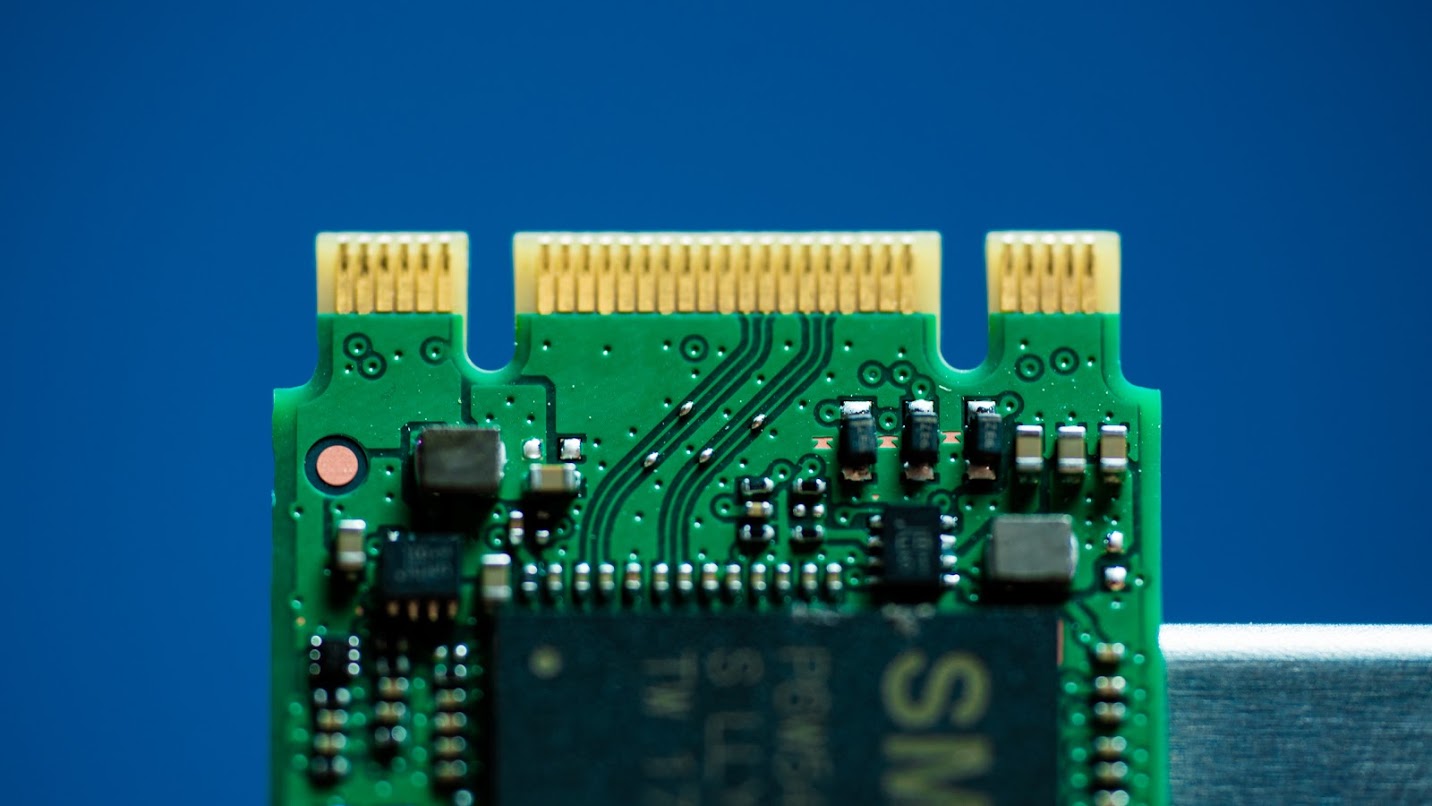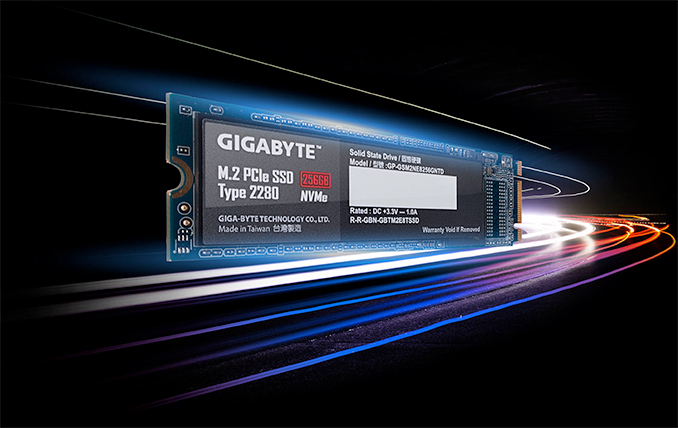
From the manual about m.2 and which slots will be disabled: AMD ® B450 Chipset 4x SATA 6Gb/s ports 1x M.2 slot (M22, Key M). Supports PCIe 2.0 x4 2242/ 2260 /2280 storage devices. There is a PCI-E m.2 drive and a SATA m.2 drive. Doublecheck your motherboard's user manual and make sure you don't have the drive plugged into the wrong slot. If it only has one slot then make sure you didn't order the wrong type of drive. Apparently they are not cross compatible, PCI-E only works with PCI-E and SATA only works with SATA. M.2 SSDs have become a standard for small form factor hard drives. What are the benefits of M.2? And what lies ahead? To use a PCI-Express-compatible M.2 card slot, the motherboard manufacturer must take those PCI-Express lanes away from other components on the system. How those PCI-Express lanes are divided between the devices on the boards is a major concern. For instance, some manufacturers share the PCI-Express lanes with SATA ports.
Quick Navigation:
The Problem to Clone M2 SSD
What is M.2 SSD?
Before learning how to clone M.2 SSD to M.2 SSD, you may want to know these information about M.2 SSD.

M.2 SSD (formerly known as Next Generation Form Factor (NGFF) SSDs) are smaller and more suited for modern ultraportable devices (Ultrabooks and tablets) compared to older SATA SSDs as they allow for different module widths and lengths to adjust for different connectors. As a result, M2 SSDs are known for their small size and fast speeds.
Why clone M.2 SSD to larger M.2 SSD?
Generally speaking, many small devices like laptops, Ultrabooks, and tablets use a small capacity M.2 SSD drive as their boot drive and HDDs for storage. Once you have the OS, applications, and games installed, you’ll soon find that the drive has run out of space or has very slow respond. To fix this you will need to clone M.2 SSD to larger M.2 SSD drive, then you will:
Get more storage space.
Speed up your system.
Get shorter boot time.
Best M.2 SSD Cloner - AOMEI Backupper
To clone to M.2 SSD safely, you could try the specialist M.2 SSD cloner in Windows 10, 8, 7, Vista, and XP - AOMEI Backupper Professional - that clones everything (including Windows OS, installed programs, and personal files, etc.) from a M.2 SSD drive to new M.2 SSD without affecting the original OS and data.
Besides, it will clone to M.2 SSD with simple clicks, accelerate the overall performance for the M.2 SSD with SSD Alignment, and ensure it's bootable after clone without any issues.
Please download AOMEI Backupper Professional 30 day free trial and have it a go (Clone features in free trial can only be demonstrated, please upgrade to enjoy):
Download Free Trial
Win 10/8.1/8/7/XP

Secure Download
How to Clone M.2 SSD to M.2 SSD Easily in Windows 10/8/7?
Here is the step-by-step guide to safely clone M.2 SSD to larger M.2 SSD in Windows 10/8/7:
✤✤Before cloning M.2 SSD to larger M.2 SSD, do the following✤✤:
☂Make sure that the new larger M.2 SSD is compatible with your motherboard, or consult your computer manufacturer.
☂Install the larger M.2 SSD correctly. Please disconnect battery or cut off the power supply before installing.
>> On a laptop, open M.2 slot, slide and fix the SSD.
>> On a desktop, open the host cover, find the M.2 connector (labeled with SATA/PCIe), and install the SSD.
☂Prepare an M.2 to USB adapter to connect the larger M.2 SSD with machine if there is only one M.2 slot on your computer.
☂Initial the M.2 SSD in Disk Management and format with MBR or GPT partition style according to your demands.
Step 1. Perform this M.2 SSD cloner after installation, select Clone > Disk Clone. Click System Clone to move operating system only to another M.2 SSD if you prefer.
Step 2. Select the M.2 SSD system disk as the source disk and hit Next to continue.
Step 3. Choose the larger M.2 SSD as the target disk, and then press Next to continue.
★Tips: If there is any data on the destination M.2 disk, it will be erased during the cloning process. Please backup files before the M.2 SSD cloning.
Step 4. Tick SSD Alignment to speed up for M.2 SSD, and then press Start Clone to safely clone M.2 SSD to larger M.2 SSD in Windows 10/8/7.
Usually, this only take a short amount of time, but the larger the disk is, the longer time will be. Because the cloning time depends on the data size of the source m.2 drive.

★Helpful Tips:
1. Sector by sector clone: It enables you to clone all the sectors (blocks) on the source M.2 SSD even it’s blank or bad sector, and much longer time will spend. Uncheck this option will skip the bad sectors if there exists.
2. You could click on Edit Partitions to resize the partitions on the destination disk and you could fully use the storage space on the larger M.2 SSD. There are three options that you may need:
✍Copy without resizing partitions: it’s selected by default. There will be an unallocated space available after cloning smaller disk to larger disk if this option checked. Then, you could merge unallocated space to C drive or other existing partitions, or even create a new partition to store data separately.
✍Add unused space to all partitions.
✍Manually adjust partition size.
If you would like to adjust the partition size automatically during the cloning process, please select the second option or third option.
How to Boot from Cloned Larger M.2 SSD?
After the cloning process has finished, to boot from the cloned larger M.2 SSD correctly, do the following:
For the computer that only one M.2 slot: shut down your computer, remove the old M.2 SSD, and replace with the newly cloned larger M.2 SSD, boot from the cloned M.2 SSD.
For the computer that has more than one M.2 slot: Restart your computer and repeatedly press a certain key (usually F2, F10, F12, ESC, DEL, etc.) to enter BIOS or UEFI BIOS, change boot priority to the cloned larger M.2 drive.
Remember to replace the mounting screws to secure the M.2 SSD drive in your machine.
Now you have mastered cloning M.2 SSD to M.2 SSD, you might want to try cloning a larger HDD to smaller SSD, make sure the smaller SSD can hold all the data from the larger HDD, cloning a specific partition to the target disk using the Partition Clonefunction, or even cloning MBR disk to GPT disk, or vice versa.
Another secure way to perform M.2 SSD to M.2 SSD migration when there is only one M.2 slot is that backup M.2 SSD, replace smaller M.2 SSD with larger one, and then restore image to the larger M.2 SSD. AOMEI Backupper Professional could do the same task. For detailed steps, please refer to how to upgrade laptop drive via backup and restore.
Summing Up
To clone M.2 SSD to M.2 SSD safely, you need to first check that the new M.2 SSD drive is compatible with your motherboard and carefully install the drive correctly. Next, use powerful M.2 cloner like AOMEI Backupper Professional to clone the disk ensuring that it will boot without any issues.
If you are using Windows Server 2003, 2008, 2012, 2016, 2019 (including R2), SBS 2003, 2008, 2011, please try AOMEI Backupper Server and follow the same steps above, and more advanced features provided, command line backup/restore/clone, universal restore, real time file sync, etc.
Summary :

There are different slots that you can choose, such as SATA, but the most popular slot now is the M.2 slot. Then what is an M.2 slot and what can it do? In this post, MiniTool provides you with detailed information about the M.2 slot.
M.2 Slot Devices App
What Is an M.2 Slot?
To begin with, what is an M.2 slot? The M.2 format, formerly known as Next Generation Form Factor (NGFF), is technically a replacement for the mSATA standard, which was very popular among manufacturers of ultra-compact laptops and other small accessories. The M.2 format is specially designed for manufacturers to replace various specific devices.
M.2 Slot Devices Vs
What Can M.2 Slot Do?
M.2 may completely replace all aging Serial ATA formats. The M.2 slot can interface with SATA 3.0 (the cable that may be connected to the storage drive of the desktop), PCI Express 3.0 (the default interface for graphics cards and other major expansion devices), and even USB 3.0.
This means that maybe any storage or disk drive, GPU or port extension, or low-power gadget using USB connection can be installed on the card that plugs into the M.2 slot at the same time. But the actual situation is much more complicated.
When you are using the PCI bus instead of the SATA bus, depending on the function of the motherboard and the M.2 card itself, M.2 devices can transfer data 50% to about 650% faster than standard SATA.
If you have the opportunity to use an M.2 SSD on a motherboard that supports PCI third generation, its speed may be much faster than conventional SATA drives.
What Devices Use the M.2 Slot?
Currently, M.2 is mainly used as an interface for ultra-high-speed SSDs on laptops and desktops. Some laptop designs also adopt the M.2 port as a wireless connection. This is not very common for desktop computers, which generally prefer to use a USB dongle or PCIe 1x card (although there is no reason why you cannot do this on a compatible motherboard).
And some companies have begun to expand the use of M.2 slots to categories that are not suitable for storage or expansion. Although no one has yet manufactured an M.2 graphics card, Intel is selling its Optane, a speed-up cache storage device in M.2 format, to consumers.
Does Your Computer Have an M.2 Slot?
If your PC was manufactured or assembled in recent years, it may have an M.2 slot. Unlucky, the flexibility of the format means that using it is not as easy as inserting a card.
The M.2 card has two main compatibility variables: length and key. The first one is obvious - your computer needs to have enough physical space to support the length of the card you want to use. The second is variable - the card’s connector must match the slot you want to insert.
Can You Add an M.2 Card If Your Computer Doesn’t Have an M.2 Slot?
If you are using a laptop, then you can't. The design of modern laptops is so compact that there is no room for unplanned expansion. If you use a desktop computer, then it’s OK for you. Adapters sold in large quantities already use the PCIe x4 slot on your motherboard.
However, if your motherboard cannot boot from PCIe, then you cannot set the M.2 drive as the boot drive, which means you will not benefit from a lot of speed. So you should know that if you want the full advantages of the M.2 hard drive, you may need a motherboard that supports this motherboard.
If you don’t know how to boot from M.2 SSD, this post is what you need. This post demonstrates how to install Windows 10 on M. 2 SSD and how to boot from M.2.
Bottom Line
This post has given you most information about the M.2 slot, such as what it is and what it can do. If your laptops don’t have an M.2 slot, then you cannot add an M.2 card. But you can do that if you are using desktops.